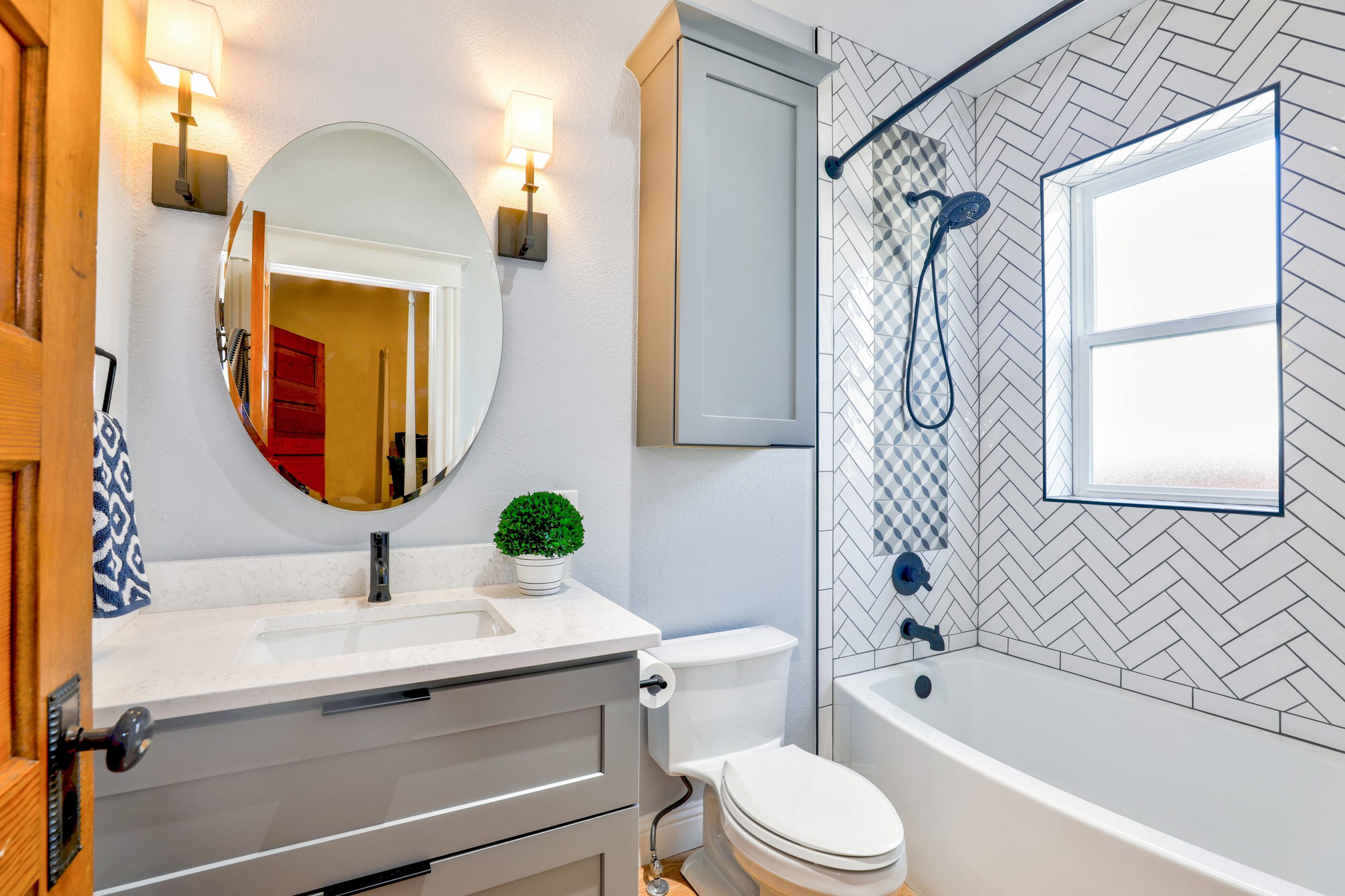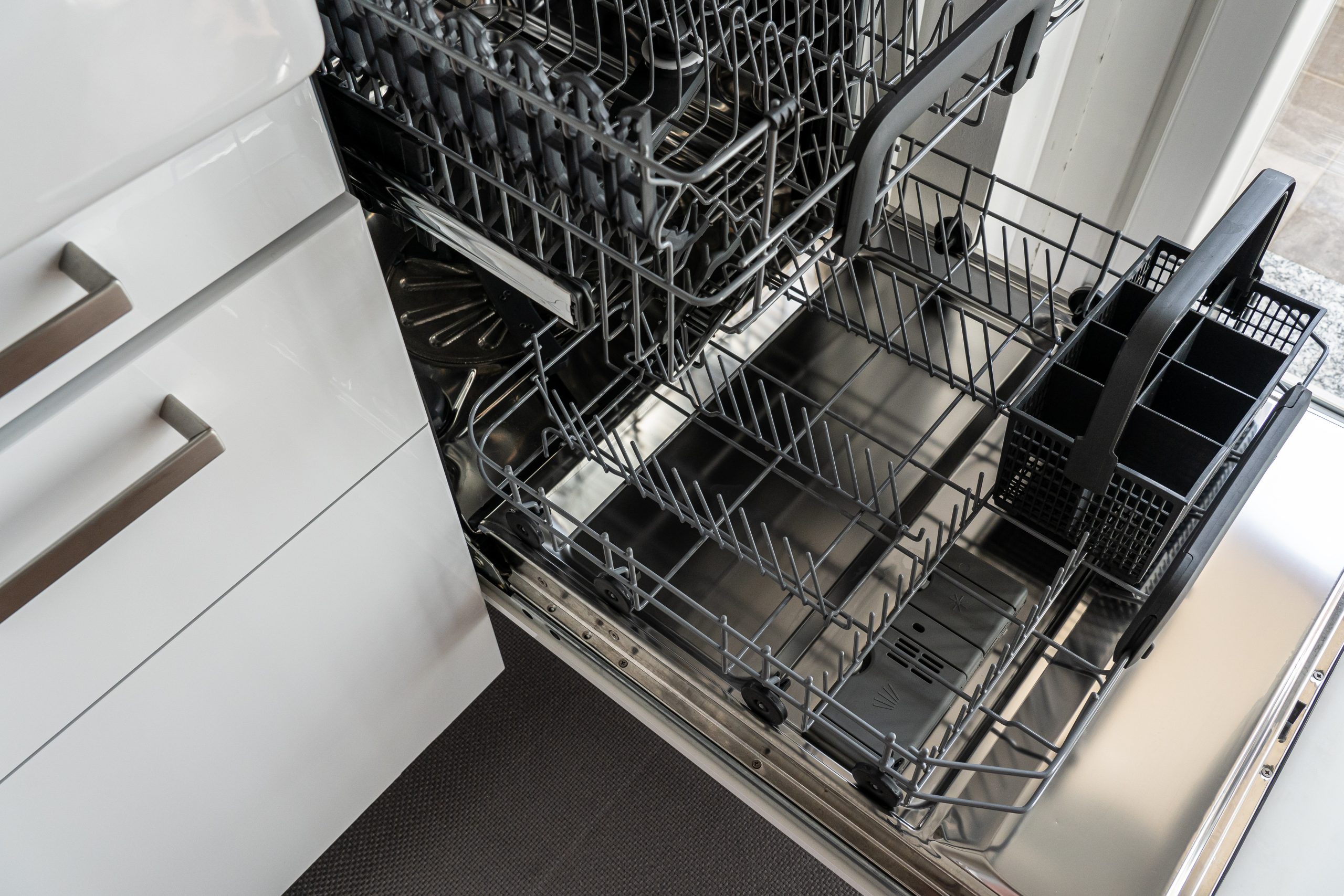Maintaining a healthy and efficient plumbing system is essential for the well-being and comfort of your home. To ensure that your plumbing infrastructure is in optimal condition, regular inspections are paramount. At Service by Scott, we offer comprehensive health and safety plumbing inspections that prioritize the long-term functionality and safety of your home’s plumbing system.
A plumbing inspection conducted by our team of trained professionals goes beyond the surface level and delves into the intricate details of your plumbing system. We understand the importance of proactive maintenance and the potential risks that can arise from neglected plumbing issues. That’s why our dedicated plumbers conduct thorough evaluations to identify any existing or potential problems, enabling us to address them promptly and effectively.
In this informative article, we will provide an in-depth exploration of what you can expect during a plumbing inspection. From the initial preparations to the meticulous examination of plumbing fixtures, water supply, and drainage systems, and the identification of potential issues, we will guide you through the entire process. Our goal is to equip you with the knowledge and understanding necessary to make informed decisions about the health and maintenance of your plumbing system.
By choosing Service by Scott for your plumbing inspection needs, you can trust that you are in capable hands. We take pride in our expertise, professionalism, and commitment to delivering exceptional service. Our health and safety plumbing inspections provide you with peace of mind, knowing that your home’s plumbing system is functioning optimally and that any potential issues are detected early on.
Join us as we delve into the world of plumbing inspections, emphasizing the importance of regular maintenance and the benefits it brings to your home. Together, we can ensure the longevity, efficiency, and safety of your plumbing system.
Importance of Plumbing Inspections
A plumbing inspection is a comprehensive evaluation of your plumbing system, conducted by a professional plumber. It involves assessing various components, including pipes, fixtures, drains, and water supply systems. Regular plumbing inspections can help identify potential problems before they escalate into costly repairs or emergencies.
During an inspection, a trained plumber will examine your plumbing system for signs of leaks, corrosion, or other issues that may affect its performance. By detecting problems early on, you can address them promptly and prevent further damage to your property. Moreover, regular inspections contribute to the longevity and efficiency of your plumbing system, saving you money on utility bills and unnecessary repairs in the long run.
Preparing for a Plumbing Inspection
Before a plumbing inspection takes place, it is essential to make a few preparations. These simple steps can help ensure a smooth and efficient evaluation of your plumbing system.
Gathering necessary documents
Gather any relevant documents related to your plumbing systems, such as previous inspection reports or maintenance records. These documents can provide valuable insights into past issues or repairs and help the plumber assess the current state of your plumbing system.
Clearing the area
Ensure that the plumber has easy access to all areas of your home where plumbing components are located. Clear any clutter or obstacles that may hinder the inspection process. This will save time and allow the plumber to thoroughly examine your plumbing system.
Initial Inspection Steps
When a plumber arrives at your home to conduct a plumbing inspection, they will follow a series of initial steps to kickstart the evaluation process. These steps set the foundation for a comprehensive examination of your plumbing system. Let’s take a closer look at the typical initial inspection steps:
Introduction and discussion
The plumber will introduce themselves and initiate a conversation to understand your specific concerns or any issues you have encountered with your plumbing system. This discussion allows them to gather valuable information and tailor the inspection to address your specific needs.
Visual assessment
The plumber will begin with a visual assessment of the plumbing components that are readily visible. This includes fixtures such as sinks, toilets, showers, and water heaters. They will look for any obvious signs of leaks, corrosion, or damage. This initial visual inspection helps the plumber identify potential problem areas that require closer examination.
Evaluation of accessible pipes
Next, the plumber will evaluate the accessible pipes throughout your home. This may involve inspecting exposed pipes in basements, crawl spaces, or utility rooms. The plumber will look for signs of leaks, corrosion, or other issues that may affect the overall functionality of your plumbing system.
Checking water pressure
Water pressure plays a crucial role in the performance of your plumbing fixtures. The plumber will measure the water pressure at various points in your home to ensure it falls within the optimal range. High or low water pressure can indicate potential problems that need attention.
Assessing drainage
Effective drainage is essential to prevent water accumulation and potential flooding. The plumber will assess the drains in sinks, showers, and tubs to ensure they are clear and free from clogs. They will also check the condition of drainpipes and evaluate the effectiveness of the overall drainage system.
These initial inspection steps lay the groundwork for a more detailed examination of your plumbing system. By assessing the visible components, accessible pipes, water pressure, and drainage, the plumber can identify potential areas of concern and direct their attention accordingly. These preliminary steps provide valuable insights and help set the course for a thorough and efficient plumbing inspection.
Evaluating Plumbing Fixtures

During a plumbing inspection, evaluating plumbing fixtures is a crucial aspect of assessing the overall condition and functionality of your plumbing system. Plumbing fixtures include sinks, toilets, showers, bathtubs, and other appliances that utilize water. Let’s delve deeper into the process of evaluating plumbing fixtures:
Visual Inspection
The plumber will visually inspect each plumbing fixture to check for any visible signs of damage, wear, or leaks. They will examine the condition of the fixtures, looking for cracks, chips, or corrosion. Additionally, they will assess the quality of the seals and gaskets to ensure they are intact and functioning properly.
Water Flow and Drainage
The plumber will test the water flow and drainage performance of each plumbing fixture. They will check if the water flow is smooth and consistent, ensuring there are no issues such as reduced pressure or blockages. They will also evaluate the drainage efficiency, ensuring that water is swiftly and completely drained without any backups or slow draining.
Leakage Detection
To identify potential leaks, the plumber will carefully examine the plumbing fixtures for any signs of moisture or water accumulation. They will inspect the surrounding areas, including the base of sinks, toilets, and bathtubs, to ensure there are no hidden leaks. Any detected leaks will be documented in the inspection report along with recommended actions for repair.
Proper Functionality
The plumber will assess the proper functionality of each plumbing fixture. They will test the handles, knobs, valves, and other components to ensure they are working smoothly and without any issues. For toilets, they will check the flush mechanism and ensure it operates effectively.
Water Efficiency
Water efficiency is a crucial consideration for plumbing fixtures. The plumber will evaluate the efficiency of each fixture in terms of water usage. They will check for any outdated or inefficient fixtures that may contribute to water wastage. If necessary, they may recommend replacing certain fixtures with more water-efficient models to reduce water consumption and promote sustainability.
By thoroughly evaluating plumbing fixtures, the plumber can identify any problems, malfunctions, or inefficiencies that may require attention. They will provide recommendations for repairs, replacements, or upgrades to ensure that your plumbing fixtures are in optimal condition, promoting water conservation and efficient functionality throughout your home.
Inspecting Water Supply and Drainage Systems
The water supply and drainage systems are essential components of your plumbing system. The plumber will thoroughly examine these systems during the inspection.
Checking pipes and fittings
The plumber will inspect the pipes and fittings throughout your home, looking for any signs of leaks, corrosion, or damage. They will assess the condition of both visible and hidden pipes, ensuring there are no underlying issues that could lead to water damage or reduced water flow.
Assessing water pressure
Proper water pressure is crucial for the smooth functioning of your plumbing fixtures. The plumber will measure the water pressure at various points in your home to ensure it falls within the optimal range. High or low water pressure can indicate potential problems that need attention.
Evaluating drainage systems
Effective drainage systems prevent water accumulation and potential flooding. The plumber will assess the drains in sinks, showers, and tubs to ensure they are clear and free from clogs. They will also check the condition of drainpipes and evaluate the effectiveness of the overall drainage system.
Identifying Potential Plumbing Issues
A plumbing inspection aims to identify any existing or potential plumbing issues that may require repairs or maintenance. The plumber will keep a keen eye out for various problems that could compromise the performance of your plumbing system.
Detecting leaks
Leaks can cause significant damage if left unattended. The plumber will thoroughly inspect all visible and accessible pipes for signs of leaks, such as water stains, mold, or dampness. Identifying and repairing leaks promptly can prevent water damage and save you from costly repairs in the future.
Identifying corrosion
Corrosion is a common issue in plumbing systems, especially in older homes or in areas with hard water. The plumber will check for signs of corrosion on pipes, fittings, and fixtures. Corroded components can weaken the plumbing system and lead to leaks or reduced water flow.
Recognizing signs of clogs
Clogs can disrupt the flow of water and cause backups or flooding. The plumber will look for indications of clogs, such as slow drainage or gurgling sounds in drains. Identifying and clearing clogs can prevent further plumbing issues and ensure the proper functioning of your plumbing system.
Evaluating Water Heater and Appliances

During a plumbing inspection, the water heater and other plumbing appliances will be evaluated to ensure their optimal performance.
Assessing the water heater
The plumber will inspect the water heater to check for any signs of leaks, corrosion, or malfunctioning components. They will assess the temperature and pressure relief valves, venting systems, and the overall condition of the unit. A well-maintained water heater is essential for providing hot water efficiently.
Checking other plumbing appliances
If you have additional plumbing appliances, such as a dishwasher or washing machine, the plumber will inspect them as well. They will ensure proper connections, assess for leaks or malfunctions, and provide recommendations for maintenance or repairs if necessary.
Reporting and Recommendations
Once the plumbing inspection is complete, the plumber will prepare a detailed report outlining their findings and providing valuable recommendations. This report serves as a valuable reference, offering insights into the current state of your plumbing system and guiding you on necessary repairs or maintenance. Let’s explore the reporting and recommendations process in more detail:
Detailed Report
The plumber will compile a comprehensive report that documents their observations and assessments during the inspection. This report will include:
Identified Issues
The report will outline any existing or potential issues discovered during the inspection. This may include leaks, pipe damage, faulty fixtures, or inefficient water flow. Each issue will be described in detail, providing you with a clear understanding of the problem.
Severity Assessment
The plumber will evaluate the severity of each issue and classify them based on urgency. They may use a scale or categorization system to indicate the level of priority for addressing each problem. This helps you determine which issues require immediate attention and which ones can be addressed in the future.
Recommended Actions
The report will include a list of recommended actions to rectify the identified issues. These actions may involve repairs, replacements, or upgrades to your plumbing system. The plumber will provide specific details regarding the steps required to resolve each problem effectively.
Cost Estimates
To assist you in planning and budgeting, the report will include cost estimates for the recommended actions. The plumber will provide an approximate cost for each repair or improvement, allowing you to prioritize and allocate resources accordingly.
Recommendations for Maintenance

In addition to addressing the identified issues, the plumber will provide recommendations for ongoing maintenance of your plumbing system. These recommendations aim to optimize the performance and longevity of your plumbing system. They may include:
Regular Maintenance Tasks
The plumber will advise on routine maintenance tasks that you can perform to keep your plumbing system in good condition. This may involve tasks such as periodic inspections, cleaning fixtures, or flushing the water heater.
Preventive Measures
The plumber may suggest preventive measures to minimize the risk of future issues. This can include installing water softeners or filters, using drain guards to prevent clogs, or implementing measures to prevent frozen pipes during colder months.
Usage Guidelines
The plumber may provide guidance on the optimal usage of plumbing fixtures and appliances to avoid strain or damage. They may recommend water-saving practices, proper disposal methods, or guidelines for using garbage disposals and toilets.
By following the recommendations provided in the report, you can address existing issues, prevent future problems, and maintain the optimal performance of your plumbing system.
Conclusion
In conclusion, a plumbing inspection is a crucial step in maintaining the health, functionality, and safety of your home’s plumbing system. By scheduling regular inspections, you can detect and address plumbing issues early on, preventing potential emergencies, costly repairs, and water damage. At Service by Scott, we understand the significance of proactive maintenance and the value it brings to homeowners.
Our team of trained professionals specializes in health and safety plumbing inspections. We go beyond the surface level and delve deep into the intricate details of your plumbing system. With expertise and attention to detail, we conduct thorough evaluations to identify existing or potential problems. Our goal is to provide you with accurate insights, recommendations, and solutions to ensure the optimal performance of your plumbing system.
By choosing Service by Scott for your plumbing inspection needs, you can trust that you are in capable hands. We prioritize your satisfaction and the well-being of your home. Our comprehensive inspections and detailed reports offer transparency and empower you to make informed decisions about your plumbing system.
Take the proactive step towards maintaining the efficiency and safety of your plumbing system. Schedule a health and safety plumbing inspection with Service by Scott today. Our dedicated team will assess your plumbing system, provide recommendations for repairs or maintenance, and ensure the longevity and reliability of your plumbing infrastructure.
Don’t wait for plumbing issues to escalate. Contact Service by Scott now to book your health and safety plumbing inspection and enjoy peace of mind knowing that your home’s plumbing system is in good hands.
FAQs
How long does a plumbing inspection typically take?
The duration of a plumbing inspection can vary depending on the size of the property and the complexity of the plumbing system. On average, a thorough inspection can take anywhere from one to three hours.
Can I perform a plumbing inspection on my own?
While it’s possible to conduct a basic visual inspection, it is recommended to hire a professional plumber for a comprehensive evaluation. Professional plumbers have the necessary expertise and tools to identify potential issues that may go unnoticed by an untrained eye.
How often should I schedule a plumbing inspection?
It is recommended to schedule a plumbing inspection at least once a year. However, if you have an older plumbing system or suspect any issues, more frequent inspections may be necessary.
What are the benefits of a plumbing inspection?
A plumbing inspection provides several benefits, including early detection of potential problems, prevention of water damage, improved water efficiency, and cost savings by addressing issues before they escalate.
How much does a plumbing inspection cost?
The cost of a plumbing inspection can vary depending on factors such as the location, the size of the property, and the complexity of the plumbing system. On average, you can expect to pay between $100 to $300 for a professional plumbing inspection.

